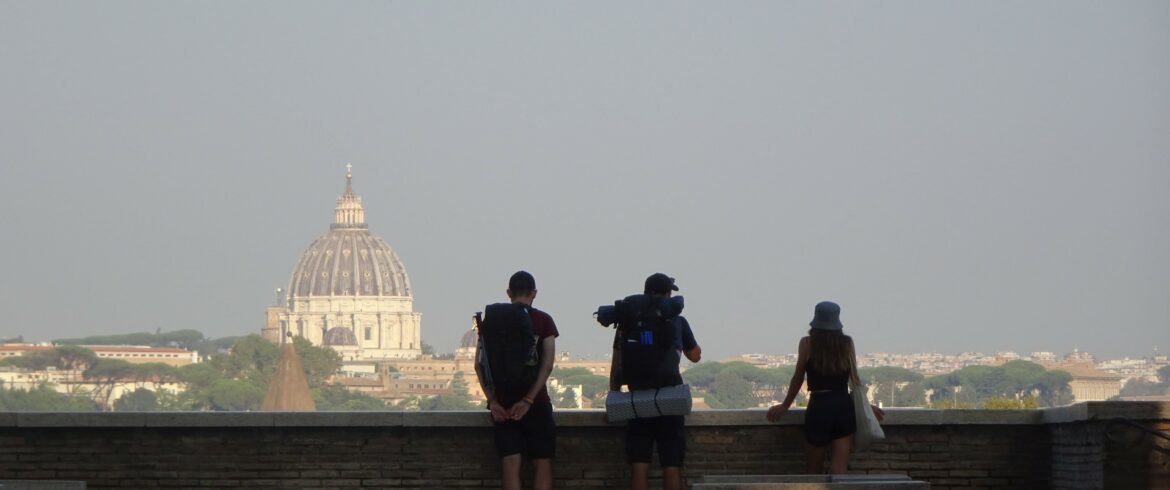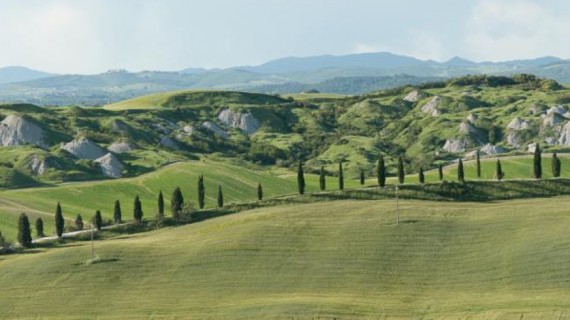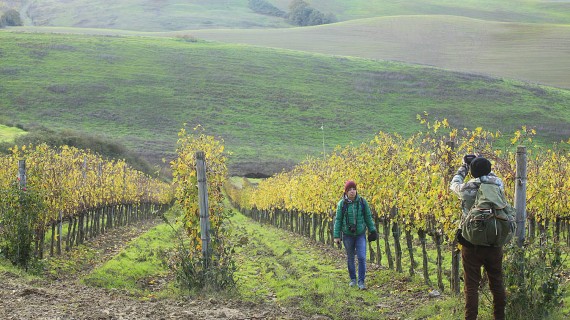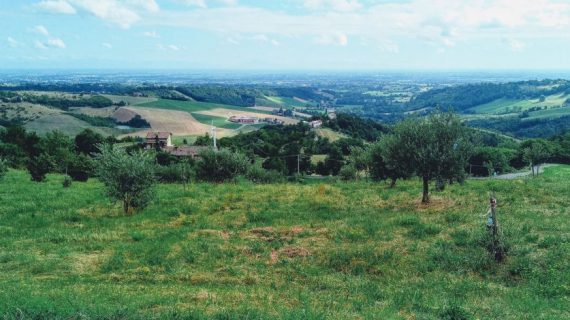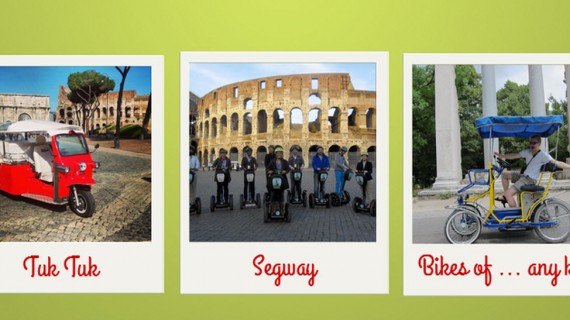The Via Francigena is an ancient pilgrimage route that stretches from Canterbury to Rome. It is a journey through history, culture, and spirituality and everyone has different reasons to do it. If you are interested in how the end of the Via Francigena is, read on!
It’s more usual for pilgrims who would like to do the Italian part of the route to leave either from the Italian border, from Lucca, from Siena or in case of doing only the last part in Lazio, from Viterbo. Unfortunately, I only had a limited time so I joined my friends in the little town of Capranica and did the last four stages of the pilgrimage.
Day 1: Capranica and Sutri
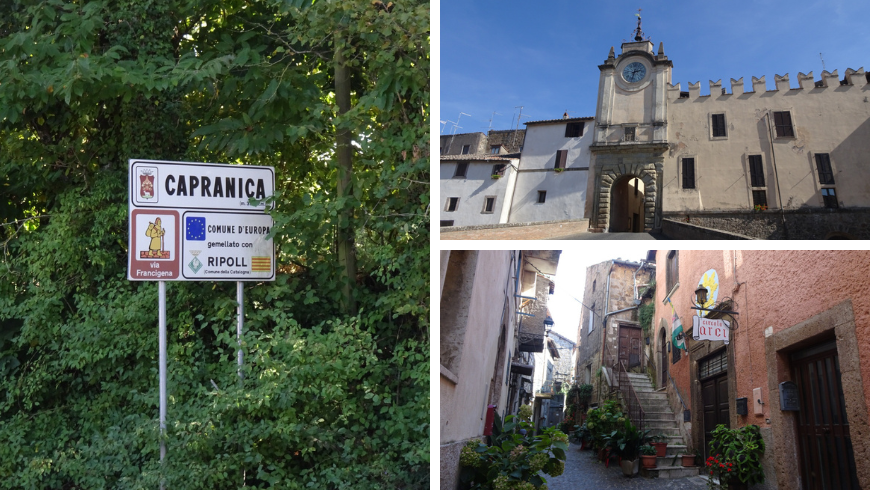
Capranica is a picturesque little town nestled in the Lazio region, just under the lake of Vico. The town’s medieval architecture and cobblestone streets set the stage for the final leg of the Via Francigena. I came upon the most charming streets and houses as I passed through the main street in the centre.
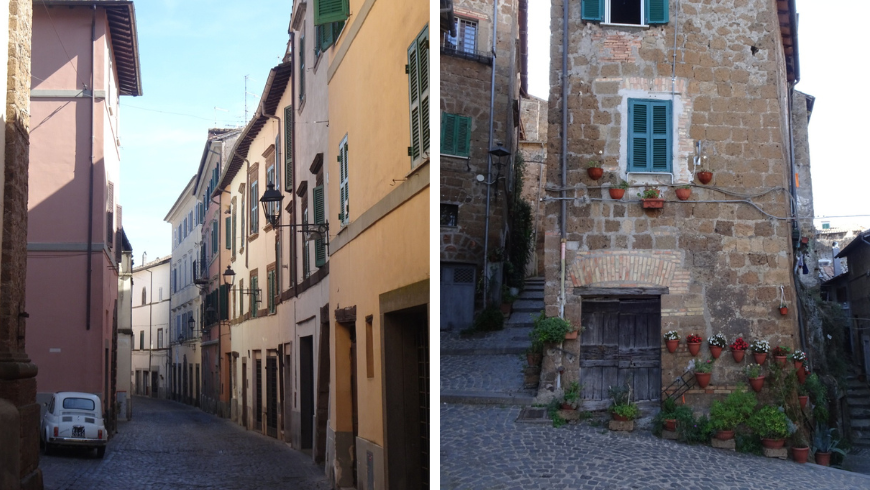
On the first day, I made my way to Sutri through woods, dirt roads and next to small streams. It is a town rich in archaeological wonders.
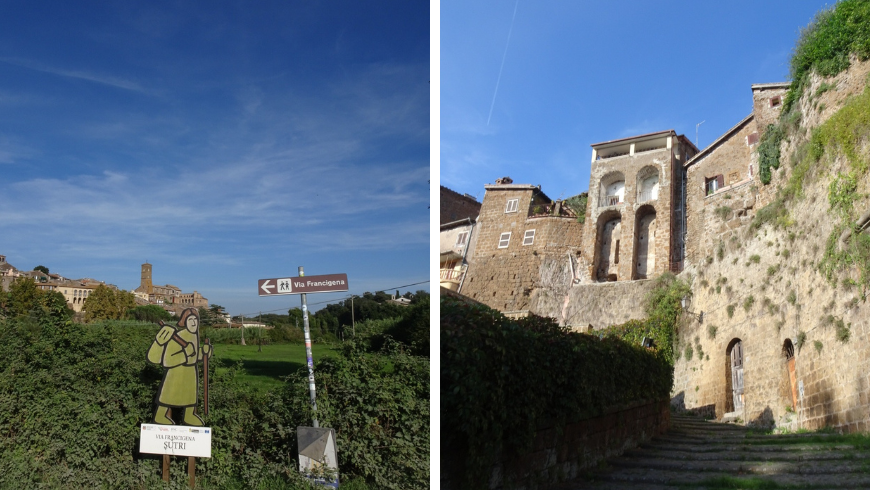
Pilgrims can marvel at the Roman amphitheatre carved into the tuff rock, a testament to Sutri’s ancient past. The Church of Santa Maria Assunta and the Mithraeum, an underground sanctuary dating back to the Roman era, offer glimpses into the town’s layered history. There are several accommodations that pilgrims can choose from, it’s always a pleasure to talk with the hosts and hear about their experiences as well.
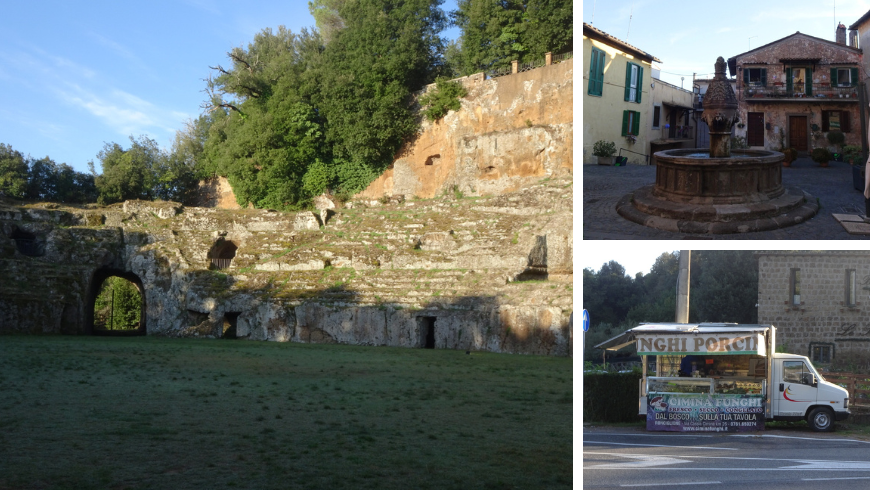
Day 2: Monterosi and Veio
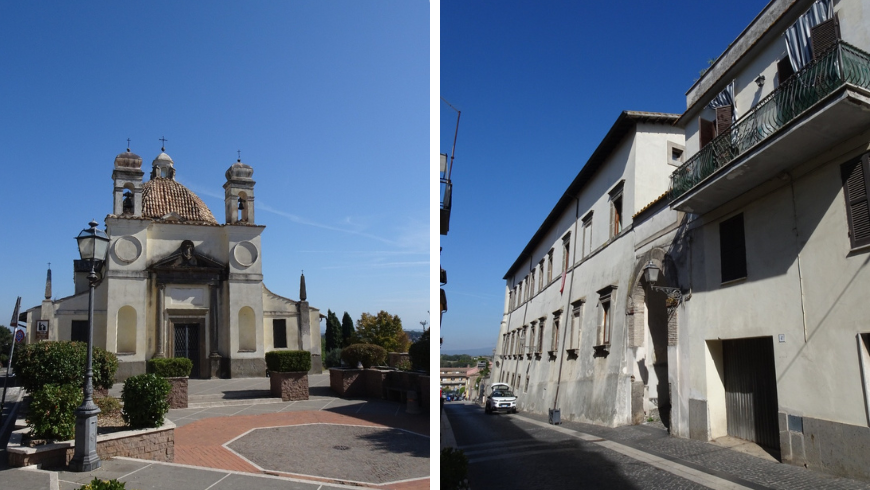
Continuing the way the next day, the trail passes through the town of Monterosi, where we took a break and took a look in the town hall where there is a little art exhibition.
As we continued to walk, we arrived the the waterfalls of Monte Gelato, where we went around the quick trail that shows all the parts of the waterfall. We followed the signs through panoramic dirt roads in the Park of Veio.
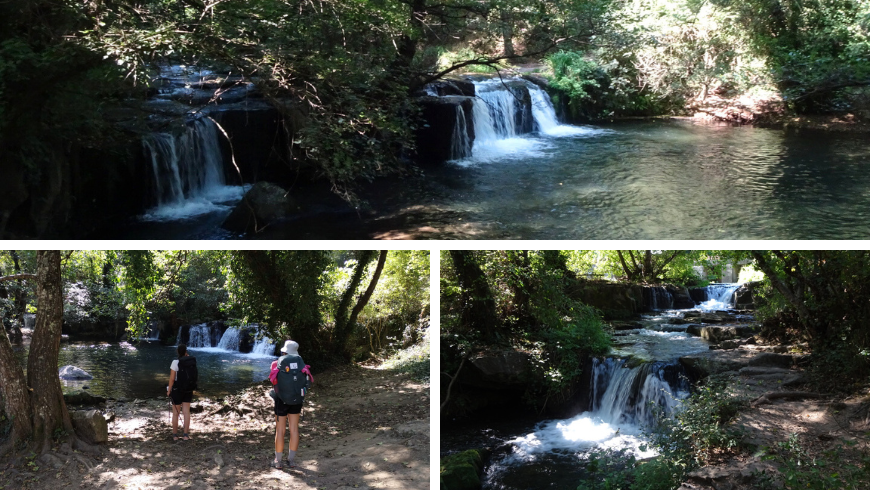
Our day ended in Campagnano di Roma, where we had dinner and took a stroll in the centre. There are many supermarkets and restaurants to choose from.
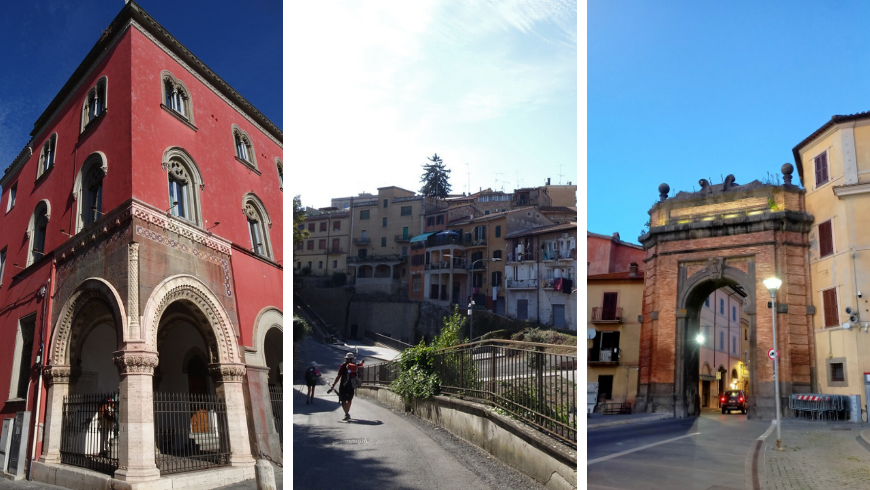
Day 3: Sorbo and Isola Farnese
The next day after a much-needed coffee we started our way in the countryside of Lazio. In this area between Campagnano and Formello is the Park of Sorbo where there are a few horses and art pieces next to our road.
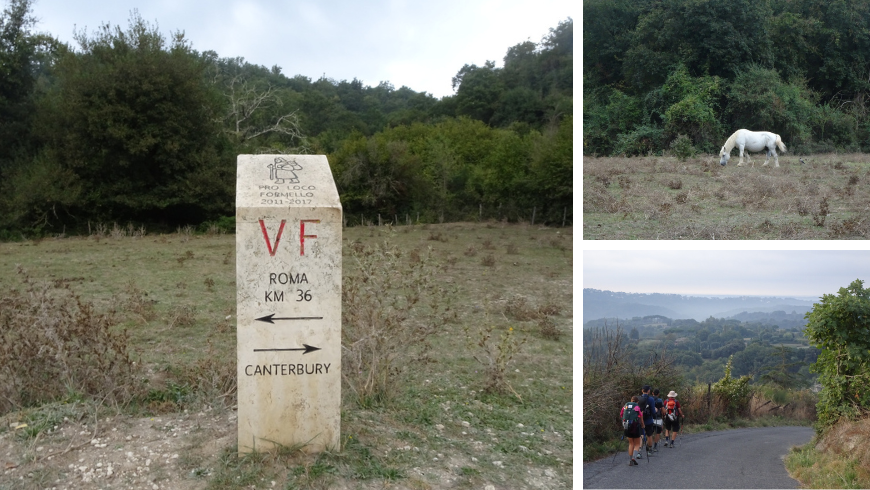
After ascending to Formello, we pass through the center next to charming squares and narrow streets.
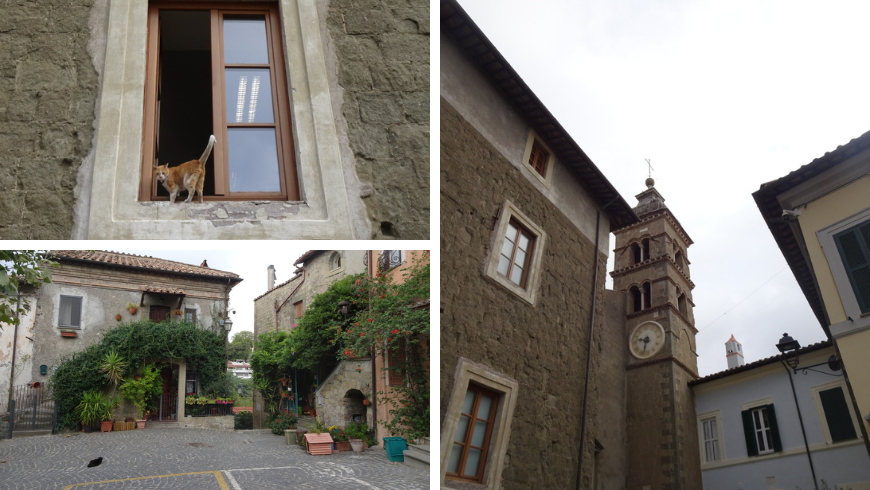
As we continued our way, we came upon another waterfall and fields with a flock of sheep. As we approached the outskirts of Rome, we reached Isola Farnese, where we stayed for the night.
Day 4: Rome
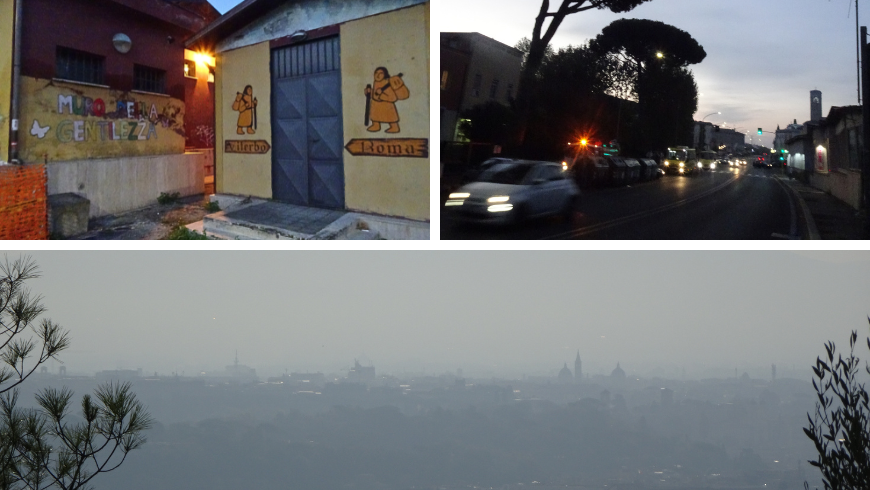
The last day begins with a long stretch along the sidewalk of Via Cassia, a busy antique Roman road. We passed through the cities of La Storta and La Giustiniana and entered the nature of Parco dell’Insugherata. We re-enter the traffic of Via Trionfale before entering Monte Mario Park. The view from the “Mons Gaudii” belvedere, the mountain of joy, almost makes us forget pollution and traffic before descending to St. Peter’s Square, our final destination. We arrive at the Vatican through the busy streets of Rome, until the St. Peter’s Basicila. It’s the symbolic endpoint, offering a profound spiritual experience. Entering the basilica, the pilgrims can collect their testimonial, which is a document that certifies the pilgrimage to Rome.
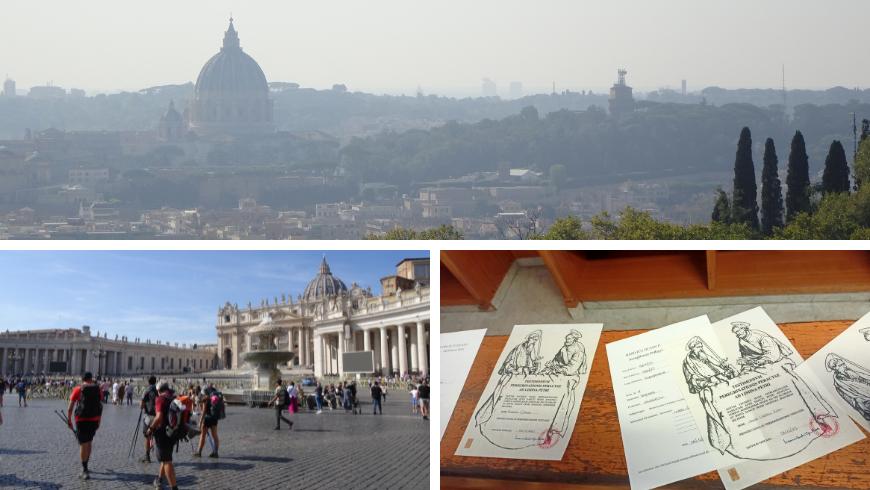
The last few stops of the Via Francigena give only a taste of how this pilgrimage route really is and give the motivation to complete other stages as well. Arriving in Rome after this many kilometres of walking gives another kind of sense of achievement. After arriving we had the chance to discover a bit of the city and enjoy the company.
The Via Francigena is not just a simple route, it connects countries, cities, history, culture and most importantly people. It’s also a perfect eco-friendly travel option. It can be completed on foot or by bike and sleeping in local B&Bs and accommodations supporting local businesses and leaving a minimal ecological footprint on this historic route.
For more technical information visit the official site!
Photos by Viktoria Szabo
